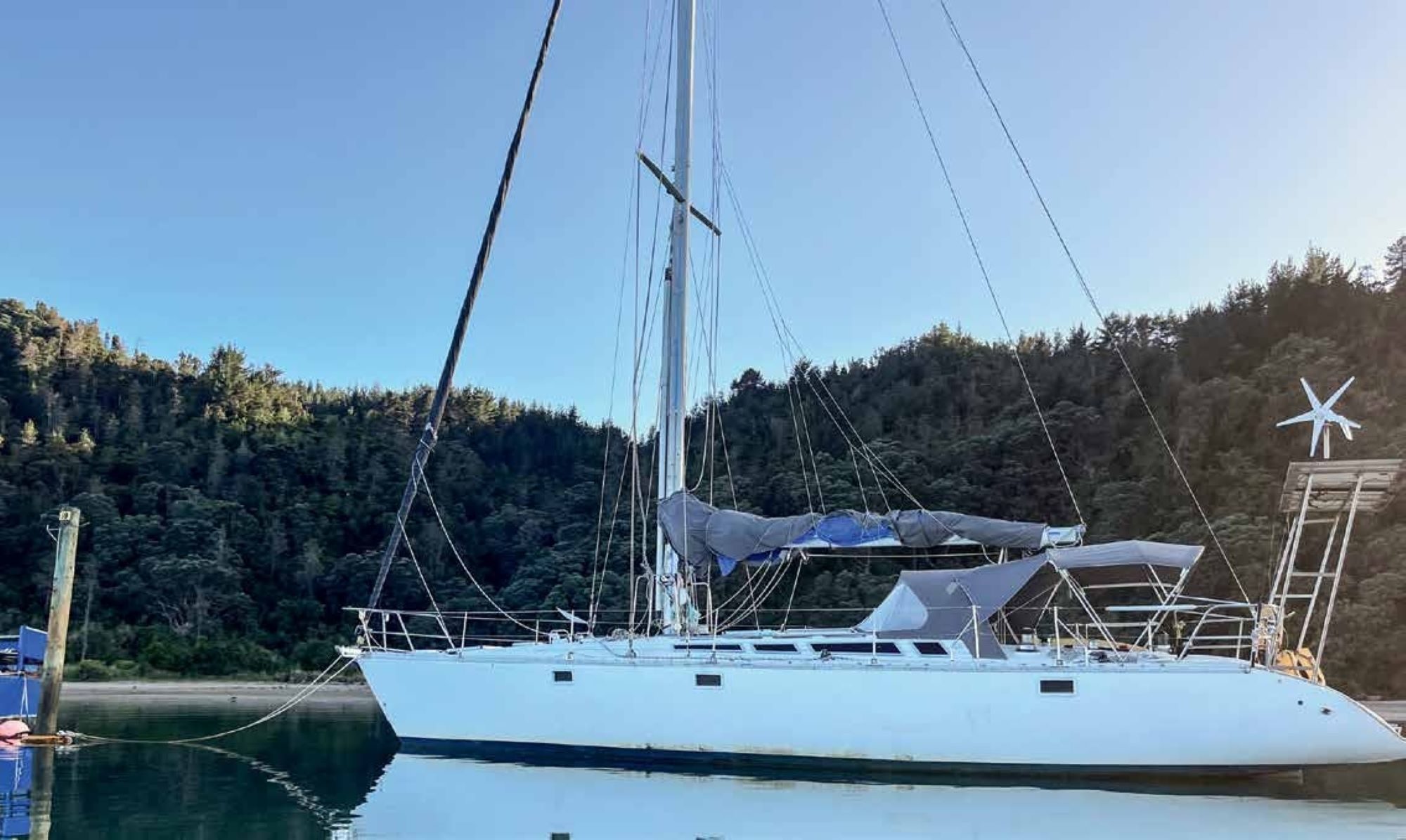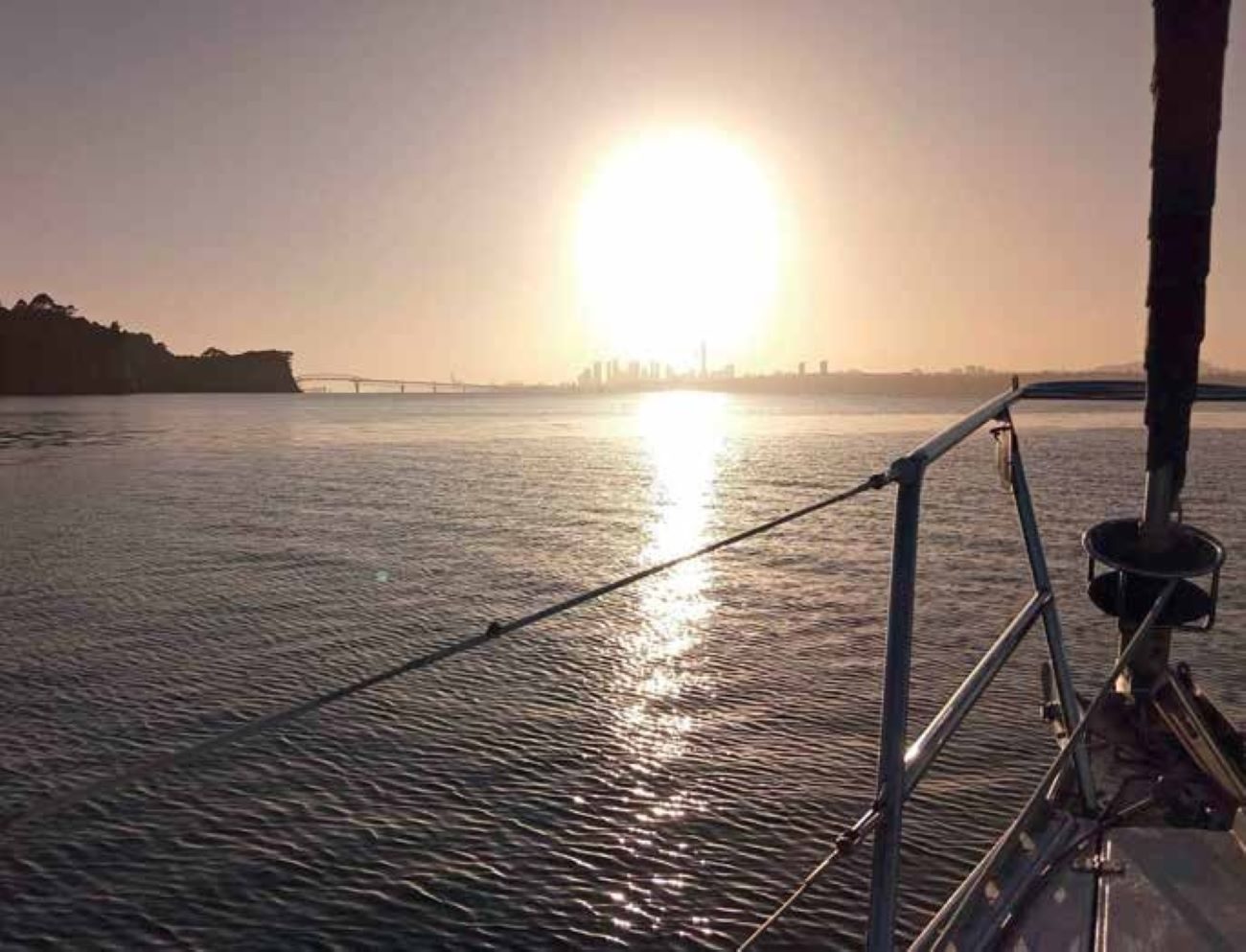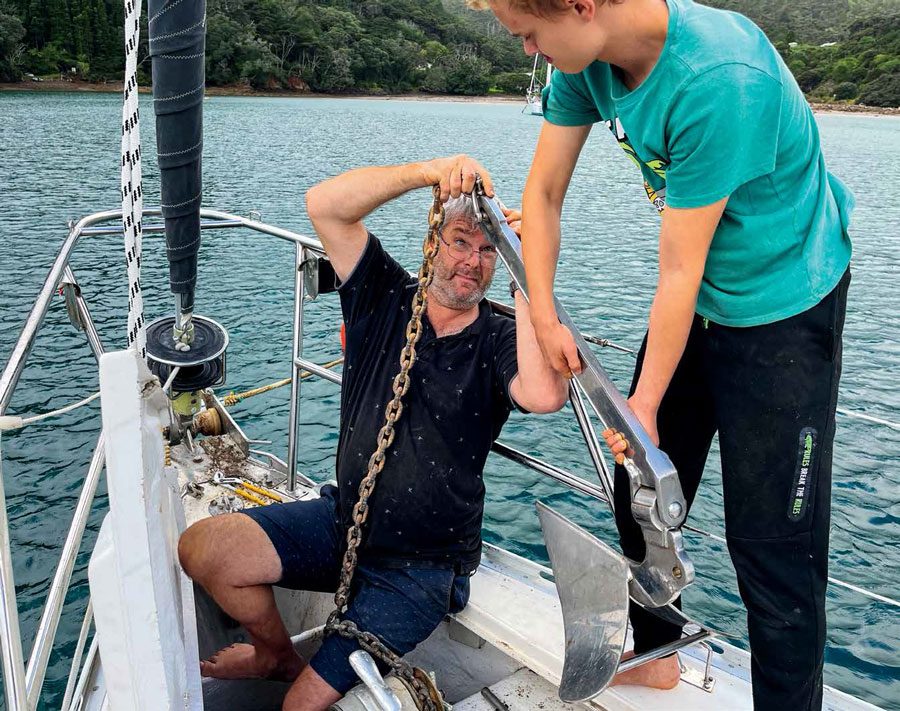

After our first overnight trip away on S.V. Sauvage in 2020, we knew we had to replace the original fridge and freezer.
The reason was simple: Kirsten, my wife, is less than five-foot tall. Sauvage came with a traditional in-bench Isotherm chiller and freezer but, impractically, we only used the top 20cm as everything below this point was for her unreachable (ahem, even with a stool.)
FRIDGE REPLACEMENT
We decided to replace it with an easier-to-access, front-opening, under-bench 12V fridge, as you often find in motorhomes. A month later, we had chosen the new fridge. As the new fridge was smaller than the old one, our final solution was to have a fridge/freezer with a veggie cupboard beside it.
Choosing the fridge was the easy bit! Now we needed to install it. I had imagined that it would be quite an easy job – in my mind all I had to do was remove the front of the bench, and then pull out the pre-formed fridge chamber and legacy refrigeration unit. Yeah, right!
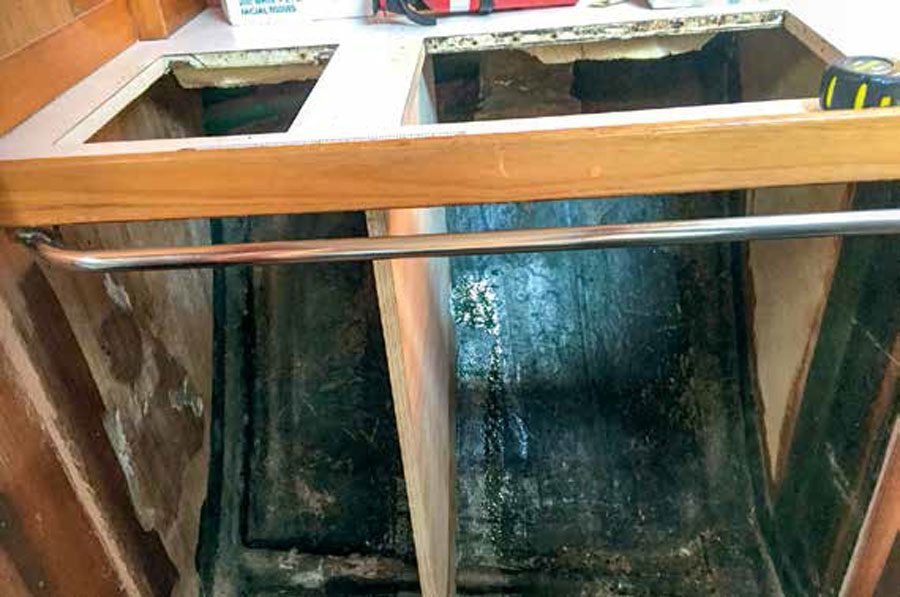

In my normal bull-at-a-gate way, I cut away the front facade with my saw but for some-unknown reason the front piece would not come away. After a great deal of probing and resizing, I found a stubborn 20cm layer of epoxy at either side. I re-cut, deeper. This time, with the aid of some crowbar action, off came the front of the galley bench.
With the first step complete, I found – gulp! – that I had massively underestimated this job. When the boat was built, they had fabricated the cupboard, installed the fibreglass fridge box and then filled it with iso-foam. To my frustration, there, behind the galley bench, lay thick, thick thermal isolation foam reinforced with portions of epoxy. Over the next three days – cutting away the foam was no easy task – I removed more and more foam, then finally, the fridge compartment. Wow! That was a big job.
Next, I used thick ply, setting it in place with glass and epoxy, to construct a divider between the fridge compartment and its new neighbour, the veggie cupboard. Likewise, I built a base to support the fridge.
The next week, I removed the door from the original front of the galley cupboard to add decoration. It had struck me that this was a ‘real’ door and would serve well as the front of the veggie cupboard.
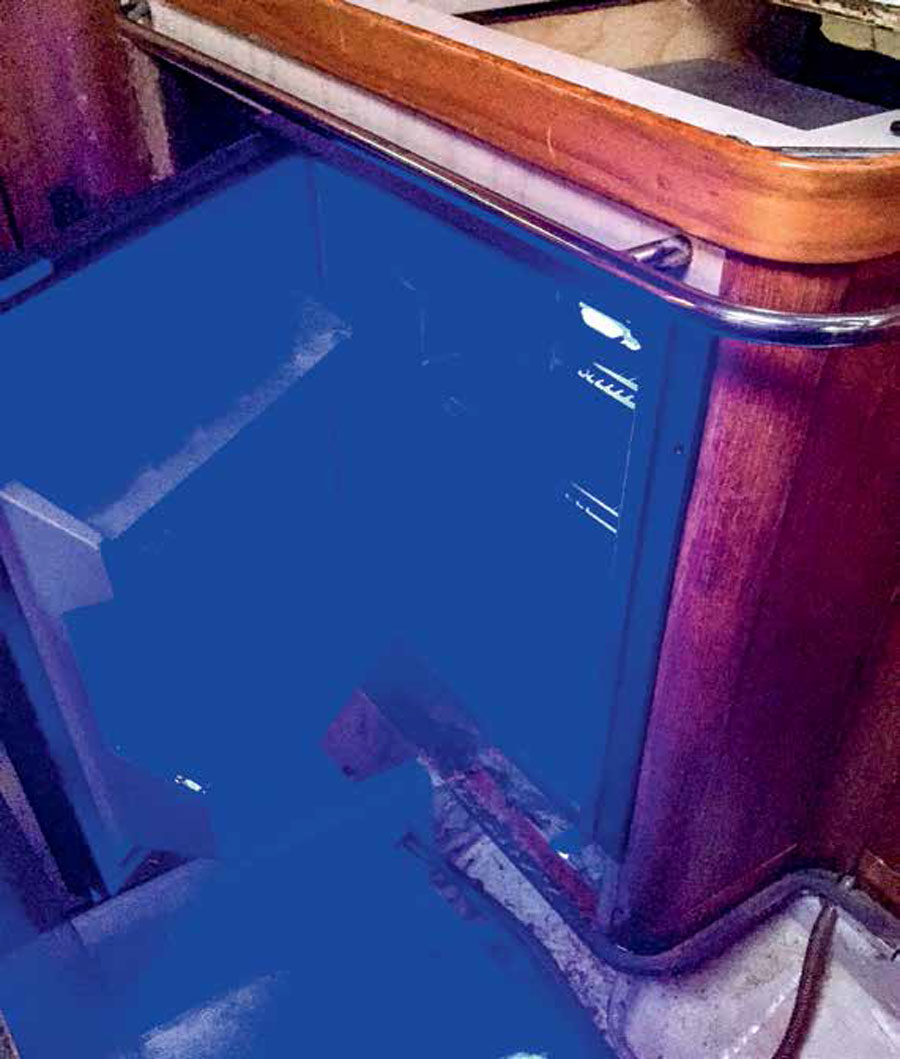

With eagerness mixed with apprehension, I installed the fridge. To my amazement, this was very much a plug and play job – so few jobs are that simple!
It works – we have a fridge the whole family can use.
My last step was to line the new veggie cupboard section. Using flexible ply, which I bent into the right shape (of the hull, which is directly behind it, less a breathing space) and glassed this into place.
It took me about a month from start to (nearly) finish. Nearly finished because the veggie cupboard door (re-using the old cupboard door means we will have a door perfectly in keeping with the others in the galley) has yet to be attached. Given its V-shape (it has a much smaller space at the bottom), my wife wants it hinged at the bottom so only the top pulls out. But importantly the fridge is working perfectly, and the spaces are all lined.
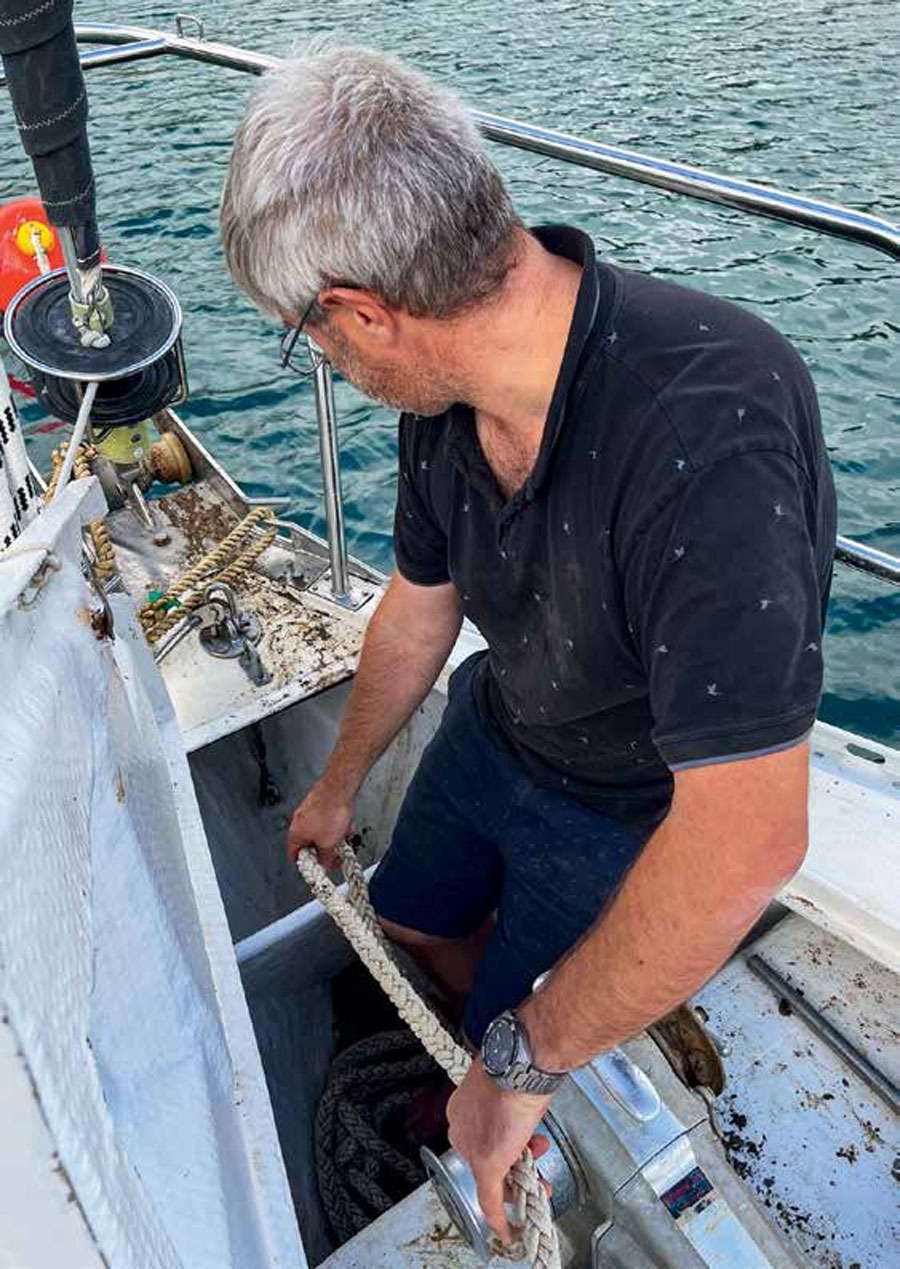
THE ANCHOR IS LOST!
You will have noticed in previous articles, my recent fixation on anchors. There is a frustrating and very real justification for this fixation. In April we were at Great Barrier Island (we love it there, it’s a place to get away from it all), but due to very bad weather, we did not anchor in Smokehouse or Kiwiriki Bay, as we normally do. Kirsten had found a more protected anchorage, Kaiarara Bay. In fairness, it was not just bad weather, it was a big weather event that came down from Fiji and delivered wind and waves of unprecedented strength.
Kaiarara Bay was mostly protected from the wind, which we expected to attack us from the north. We sheltered out the storm, and then five days later, with the wind blown through, we knew we needed to head away before the weather turned again.
With the kids up the front monitoring the anchor and myself in the cockpit, we began to weigh anchor…. Well, no, we did not! As we started to pull in the anchor chain the windlass came to a halt. Impressively, it actually pulled the boat towards the water slightly, but then stopped.
On an earlier trip, our anchor had got stuck in quickly moving sand in the bays of Great Barrier, so we used our previously proven method of moving forward and pulling the anchor up before pulling forward again, but this time, no joy! After many attempts, we had to accept that the anchor was probably stuck around a rock. We took the very hard decision to release the anchor and its chain from the boat (we were in 10 metres of water and not adequately set up to dive in and free it from the bottom).
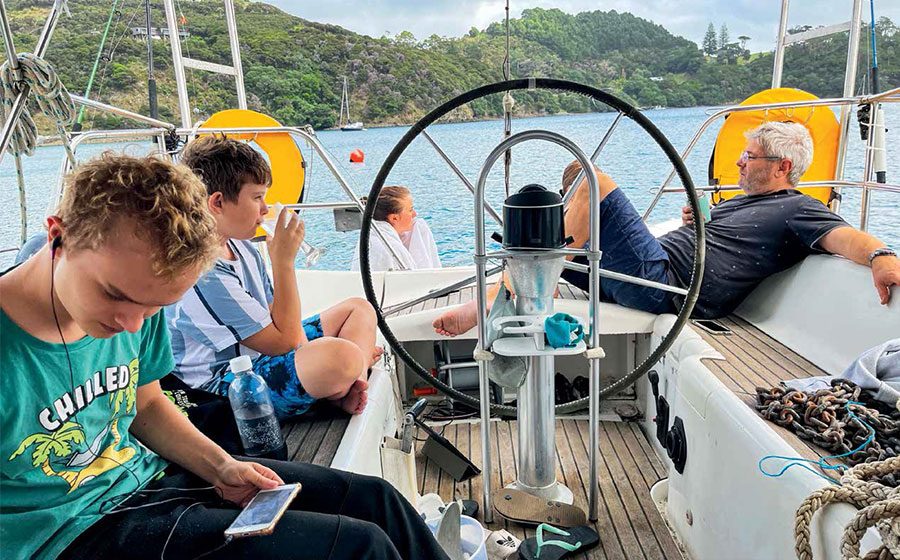
I was upset to lose the anchor, but after a stressful hour of trying to break it out, our freedom was a sweet reward!
Stressed and angry with the situation, we pulled out of Kaiarara Bay – certainly never to return! – rounded the peninsula at Kaiarara to Akapoua Bay (all of one nautical mile away) where we pulled up next to a vacant mooring ball. Thank goodness it displayed a phone number, as we were able to call its owner – an amazing guy who, after hearing our situation, was very happy to let us use his mooring.
With trepidation, as we had never replaced an anchor before, we held a family strategy session. We decided to create a human line to pass the backup anchor chain from the cockpit locker to the bow. Once the chain was at the front of Sauvage, I manhandled the spare anchor. It was significantly lighter, apparently intended as the replacement.
Having borrowed a shackle from an unused sail sheet, we attached the chain to the anchor before moving a few hundred metres to deploy the new anchor, which was successful. We were so absolutely relieved.
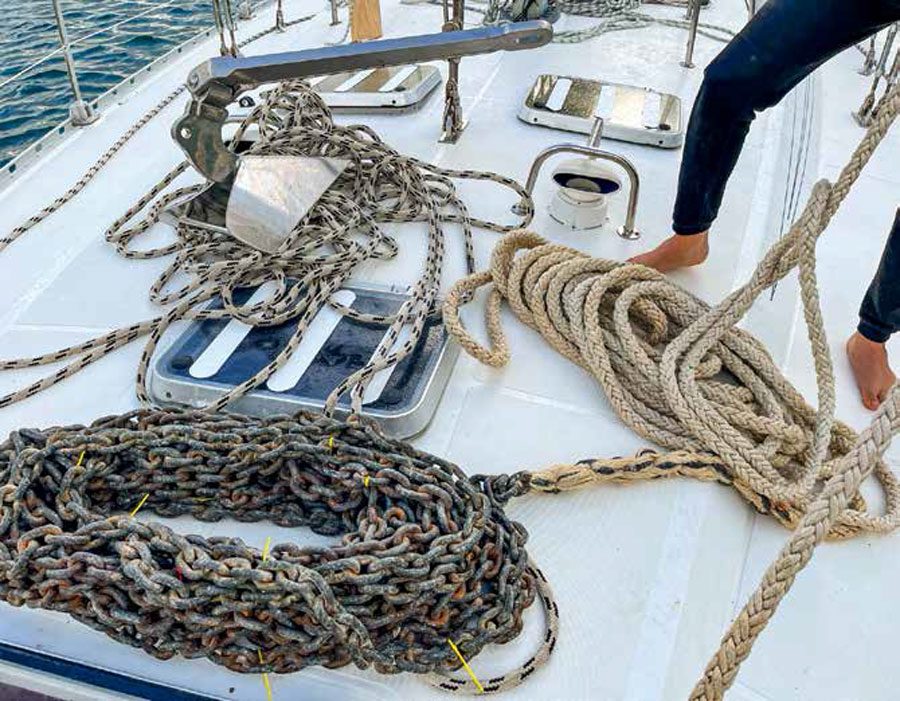
The next morning, we left Great Barrier Island for Kawau Island. (You might have seen a picture of me in the July issue steering in undies and a rain jacket as we left Great Barrier Island.)
It had been another great learning experience, and a reminder of the need for spare kit when on the sea. We have since replaced the original 60lb anchor with exactly the same-sized anchor. Life is back to normal again and all is good. BNZ


